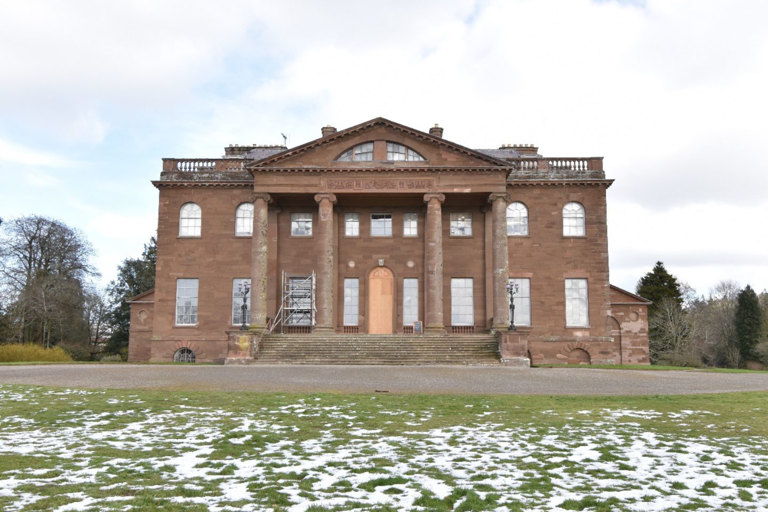December 6, 2024
Did you know that historically, most country houses were not in use all year round? Our Associate Director for Heritage Bryher Mason reveals what happened to houses over the winter season, and the implications for their management today.
What happened to an English country house when the summer balls were over, and its occupants disappeared to London for the “season”?
In the 18th century the London “season” developed to coincide with parliamentary sessions when members of both the House of Lords and the House of Commons needed to be in London to attend to governing the country. The “season” began in late October and ended in June with the summer recess. As the gentlemen of the day would bring their families with them to London, for entertainment and the all-important marriage market, great country houses would often lie empty for months at a time.
So, what was going on in the country house whilst the master was away? Some of the servants would have gone to London with the family; footmen, lady’s maids and valets, for example. However, the Housekeeper, housemaids and estate staff would be left behind to look after the huge, empty house.
“Putting to bed” an empty country house was hard work for the remaining staff. Carpets would have been rolled and bagged, curtains would also be bagged in situ and furniture would be covered, either with dust sheets or with covers made to fit the individual piece. Indeed, in the 17th century, particularly fine furniture was supplied with bespoke leather covers, only to be removed on special occasions. Chippendale automatically supplied fabric case covers with orders for upholstered seat furniture. Whilst case covers were often used on furniture when the family was in residence, during long absences, even the glass chandeliers and mirrors were covered up.
Light would have rarely entered the grand state rooms we admire as country house visitors today. Internal and external shutters would have remained closed and only opened if the housekeeper needed to inspect whether all was well in a room.
The family may well have returned to the house during the winter, often for Christmas or to go hunting. When and if they returned to London, the house would have slept once more. Spring cleaning began in May, following the sweeping of the chimneys at the end of the open-fire season. The housemaids and estate staff would have cleaned the house from top to bottom – starting in the attics. Floors were swept and scrubbed; furniture was moved away from the walls and all the paintwork washed. Carpets were beaten outside, or cleaned with damp tea leaves to remove the dust and brighten the colours. Curtains were whisked with brushes, and sometimes taken down and replaced with summer versions. Furniture was thoroughly cleaned, and bedsteads were taken apart and washed. Chandeliers and pier glasses were cleaned with damp cloths or sponges before being dried and buffed.
Once each task was completed, covers and dust sheets were replaced and the house was shrouded once more, waiting for the family to return. Without the care and attention lavished on country houses by an army of our ancestors, we would not have the pleasure of wandering around a country house admiring the Chinese wallpaper, Chippendale furniture or ancient tapestries.
The level of survival of country house collections and interiors in this country is extraordinary and the continued preservation of them today is a challenge that has been taken up by conservation professionals across the country. With many houses open to the public year-round, there is little time for rest and recuperation.
Whilst we all enjoy seeing historic interiors lit by natural daylight, the damaging effects of light on a wide range of materials has been known for centuries. Fortunately, light damage is cumulative and by controlling the “dose” an interior receives in a year, deterioration can be slowed. However, the more a house is open, the more control is required. This is why blinds are lowered on sunny days and some spaces with light sensitive items such as tapestries or other textiles, are shown by artificial light much as they would have been in the evening when the family was in residence.
Cleaning is still a vital tool to prevent damage and deterioration. When houses were closed in the winter, deep cleans would have taken place and the house “put to bed” much as described in this article (although tea leaves were used for making tea, rather than cleaning carpets). Now when a house is open throughout the year, this in-depth cleaning usually takes place in front of the public and is an opportunity for visitors to learn about how collections and interiors are cared for.
All of this, of course, takes careful planning, and managing historic houses for the long term is a challenge, whether considering the impact of a changing climate or wanting to welcome more visitors to experience the wonder and learn more about the complex histories found within the walls of a country house. This is why we, at Avalon, believe that Conservation Management Plans are an important tool in ensuring that country houses, and indeed other historic sites, are preserved for centuries to come.
If you would like to have a chat about how Conservation Management Plans can help your historic property, please get in touch with Bryher at bryher@avalonplanning.co.uk.






